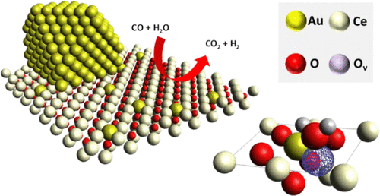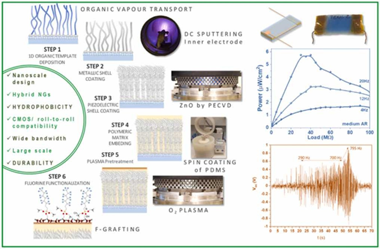Artículos SCI
2022
2022
Materiales Avanzados
Study of a Waste Kaolin as Raw Material for Mullite Ceramics and Mullite Refractories by Reaction Sintering
Sanchez-Soto, PJ; Eliche-Quesada, D; Martinez-Martinez, S; Perez-Villarejo, L; Garzon, EMaterials, 15 (2022) 583
Show abstract ▽
A deposit of raw kaolin, located in West Andalusia (Spain), was studied in this work using a representative sample. The methods of characterization were X-ray diffraction (XRD), X-ray fluorescence (XRF), particle size analysis by sieving and sedimentation, and thermal analysis. The ceramic properties were determined. A sample of commercial kaolin from Burela (Lugo, Spain), with applications in the ceramic industry, was used in some determinations for comparison purposes. The kaolin deposit has been produced by alteration of feldspar-rich rocks. This raw kaolin was applied as an additive in local manufactures of ceramics and refractories. However, there is not previous studies concerning its characteristics and firing properties. Thus, the meaning of this investigation was to conduct a scientific study on this subject and to evaluate the possibilities of application. The raw kaolin was washed for the beneficiation of the rock using water to increase the kaolinite content of the resultant material. The results indicated that the kaolinite content of the raw material was 20 wt % as determined by XRD, showing ~23 wt % of particles lower than 63 mu m. The kaolinite content of the fraction lower than 63 mu m was 50 wt %. Thus, an improvement of the kaolinite content of this raw kaolin was produced by wet separation. However, the kaolin was considered as a waste kaolin, with microcline, muscovite and quartz identified by XRD. Thermal analyses by Thermo-Dilatometry (TD), Differential Thermal Analysis (DTA) and Thermo-Gravimetry (TG) allowed observe kaolinite thermal decomposition, quartz phase transition and sintering effects. Pressed samples of this raw kaolin, the fraction lower than 63 mu m obtained by water washing and the raw kaolin ground using a hammer mill were fired at several temperatures in the range 1000-1500 & DEG;C for 2 h. The ceramic properties of all these samples were determined and compared. The results showed the progressive linear firing shrinkage by sintering in these samples, with a maximum value of ~9% in the fraction lower than 63 mu m. In general, water absorption capacity of the fired samples showed a decrease from ~18-20% at 1050 & DEG;C up to almost zero after firing at 1300 & DEG;C, followed by an increase of the experimental values. The open porosity was almost zero after firing at 1350 & DEG;C for 2 h and the bulk density reached a maximum value of 2.40 g/cm(3) as observed in the ground raw kaolin sample. The XRD examination of fired samples indicated that they are composed by mullite, from kaolinite thermal decomposition, and quartz, present in the raw sample, as main crystalline phases besides a vitreous phase. Fully-densified or vitrified materials were obtained by firing at 1300-1350 & DEG;C for 2 h. In a second step of this research, it was examined the promising application of the previous study to increase the amount of mullite by incorporation of alumina (alpha-alumina) to this kaolin sample. Firing of mixtures, prepared using this kaolin and alpha-alumina under wet processing conditions, produced the increase of mullite in relative proportion by reaction sintering at temperatures higher than 1500 & DEG;C for 2 h. Consequently, a mullite refractory can be prepared using this kaolin. This processing of high-alumina refractories is favoured by a previous size separation, which increases the kaolinite content, or better a grinding treatment of the raw kaolin.
Enero, 2022 | DOI: 10.3390/ma15020583
Química de Superficies y Catálisis
Au and Pt Remain Unoxidized on a CeO2-Based Catalyst during the Water-Gas Shift Reaction
Reina, TR; Gonzalez-Castano, M; Lopez-Flores, V; Martinez, LMT; Zitolo, A; Ivanova, S; Xu, WQ; Centeno, MA; Rodriguez, JA; Odriozola, JAJournal of the American Chemical Society, 144 (2022) 446-453
Show abstract ▽

The active forms of Au and Pt in CeO2-based catalysts for the water-gas shift (WGS) reaction are an issue that remains unclear, although it has been widely studied. On one hand, ionic species might be responsible for weakening the Ce-O bonds, thus increasing the oxygen mobility and WGS activity. On the other hand, the close contact of Au or Pt atoms with CeO2 oxygen vacancies at the metal-CeO2 interface might provide the active sites for an efficient reaction. In this work, using in situ X-ray absorption spectroscopy, we demonstrate that both Au and Pt remain unoxidized during the reaction. Remarkable differences involving the dynamics established by both species under WGS atmospheres were recognized. For the prereduced Pt catalyst, the increase of the conversion coincided with a restructuration of the Pt atoms into cuboctahedrical metallic particles without significant variations on the overall particle size. Contrary to the relatively static behavior of Pt-0, Au-0 nanoparticles exhibited a sequence of particle splitting and agglomeration while maintaining a zero oxidation state despite not being located in a metallic environment during the process. High WGS activity was obtained when Au atoms were surrounded by oxygen. The fact that Au preserves its unoxidized state indicates that the chemical interaction between Au and oxygen must be necessarily electrostatic and that such an electrostatic interaction is fundamental for a top performance in the WGS process.
Enero, 2022 | DOI: 10.1021/jacs.1c10481
Materiales de Diseño para la Energía y Medioambiente
The Response of Tomato Fruit Cuticle Membranes Against Heat and Light
Benitez, JJ; Moreno, AG; Guzman-Puyol, S; Heredia-Guerrero, JA; Heredia, A; Dominguez, EFrontiers in Plant Science, 12 (2022) 807723
Show abstract ▽
Two important biophysical properties, the thermal and UV-Vis screening capacity, of isolated tomato fruit cuticle membranes (CM) have been studied by differential scanning calorimetry (DSC) and UV-Vis spectrometry, respectively. A first order melting, corresponding to waxes, and a second order glass transition (T-g) thermal events have been observed. The glass transition was less defined and displaced toward higher temperatures along the fruit ripening. In immature and mature green fruits, the CM was always in the viscous and more fluid state but, in ripe fruits, daily and seasonal temperature fluctuations may cause the transition between the glassy and viscous states altering the mass transfer between the epidermal plant cells and the environment. CM dewaxing reduced the T-g value, as derived from the role of waxes as fillers. T-g reduction was more intense after polysaccharide removal due to their highly interwoven distribution within the cutin matrix that restricts the chain mobility. Such effect was amplified by the presence of phenolic compounds in ripe cuticle membranes. The structural rigidity induced by phenolics in tomato CMs was directly reflected in their mechanical elastic modulus. The heat capacity (Cp-rev) of cuticle membranes was found to depend on the developmental stage of the fruits and was higher in immature and green stages. The average Cp-rev value was above the one of air, which confers heat regulation capacity to CM. Cuticle membranes screened the UV-B light by 99% irrespectively the developmental stage of the fruit. As intra and epicuticular waxes contributed very little to the UV screening, this protection capacity is attributed to the absorption by cinnamic acid derivatives. However, the blocking capacity toward UV-A is mainly due to the CM thickness increment during growth and to the absorption by flavone chalconaringenin accumulated during ripening. The build-up of phenolic compounds was found to be an efficient mechanism to regulate both the thermal and UV screening properties of cuticle membranes.
Enero, 2022 | DOI: 10.3389/fpls.2021.807723
Fotocatálisis Heterogénea: Aplicaciones
Visible light photodegradation of blue basic 41 using cobalt doped ZnO: Box–Behnken optimization and DFT calculation
K. Tanji; M. Zouheir; Y. Naciri; H. Ahmoum; A. Hsini; O. Mertah; A. El Gaidoumi; J.A. Navio; M.C. Hidalgo; A KherbecheJournal of the Iranian Chemical Society, 19 (2022) 2779-2794
Show abstract ▽
CoxZn1−xO system (0 ≤ x ≤ 0.2) was synthesized using the solution combustion method with urea as a fuel source. Photocatalytic tests were performed under visible light to assess the Basic Blue 41 (BB41) conversion. Various characterization techniques, including XRD, FT-IR analysis, SEM, EDS, XRF, BET-surface area, and DRS were used to investigate the composition, structure, and morphology of the synthesized catalysts. In addition, the density functional theory calculation was used in order to study the electronic properties of the ZnO structure. The Box–Behnken model was valid for describing the degradation of BB41 dye according to the analysis of variances results. A maximum conversion of 100% for BB41 dye has been reached with high mineralization and important removal of chemical oxygen demand. The optimum conditions for BB41 conversion are reported. On the other hand, the reuse tests of the best catalyst showed high-performance stability after five cycles. Furthermore, the activity of superoxide ions (O2·−) and hydroxyl radicals (OH.) as the spices responsible for BB41 dye conversion was well confirmed by the free radicals scavenging tests. The use of Box–Behnken optimization and DFT calculation applied to the synthesized catalysts proves to be a very suitable procedure to establish the operating conditions under which the synthesis strategy of the CoxZn1−xO catalyst in its activity in the visible region performs an excellent efficiency for the degradation of organic dyes and makes contributions to the current literature related to the field of environmental technology.
Enero, 2022 | DOI: 10.1007/s13738-022-02496-w
Nanotecnología en Superficies y Plasma
Plasma engineering of microstructured piezo-Triboelectric hybrid nanogenerators for wide bandwidth vibration energy harvesting
Garcia-Casas, X; Ghaffarinehad, A; Aparicio, FJ; Castillo-Seoane, J; Lopez-Santos, C; Espinos, JP; Cotrino, J; Sanchez-Valencia, JR; Barranco, A; Borras, ANano Energy, 91 (2022) 106673
Show abstract ▽

We introduce herein the advanced application of low-pressure plasma procedures for the development of piezo and triboelectric mode I hybrid nanogenerators. Thus, plasma assisted deposition and functionalization methods are presented as key enabling technologies for the nanoscale design of ZnO polycrystalline shells, the formation of conducting metallic cores in core@shell nanowires, and for the solventless surface modification of polymeric coatings and matrixes. We show how the perfluorinated chains grafting of polydimethylsiloxane (PDMS) provides a reliable approach to increase the hydrophobicity and surface charges at the same time that keeping the PDMS mechanical properties. In this way, we produce efficient Ag/ZnO convoluted piezoelectric nanogenerators supported on flexible substrates and embedded in PDMS compatible with a contact-separation triboelectric architecture. Factors like crystalline texture, ZnO thickness, nanowires aspect ratio, and surface chemical modification of the PDMS are explored to optimize the power output of the nanogenerators aimed for harvesting from low-frequency vibrations. Just by manual triggering, the hybrid device can charge a capacitor to switch on an array of color LEDs. Outstandingly, this simple three-layer architecture allows for harvesting vibration energy in a wide bandwidth, thus, we show the performance characteristics for frequencies between 1 Hz and 50 Hz and demonstrate the successful activation of the system up to ca. 800 Hz.
Enero, 2022 | DOI: 10.1016/j.nanoen.2021.106673
- ‹ anterior
- 68 of 420
- siguiente ›














